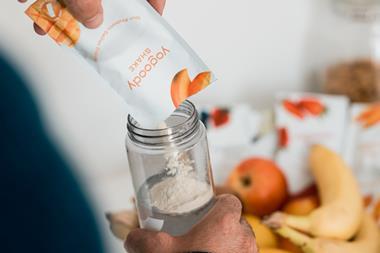There are no signs yet that UK milk deliveries to dairy processors are being significantly affected by the foot and mouth crisis.
Weekly figures published by the Intervention Board show that deliveries have been remarkably stable during each of the four weeks to 10 March at just over 245 million litres a week. In fact, deliveries for three of those four weeks have been between 1.5% and 1.8% higher than in the same period last year.
The reasons are twofold. Last year farmers were at risk of exceeding their EU production quotas and many were cutting back output to avoid super levies. Now there's no risk of exceeding quota as earlier declines in milk output more than 4% in the 11 months to February have put total annual UK output well below the danger mark.
Restriction of movements of animals off farms may also have forced some farmers to continue milking cows which would have been sold or culled by now, temporarily increasing the national milking herd.
Meanwhile, UK butter makers face considerable market uncertainties as milk and cream are diverted into butter from other normal outlets. Manufacturers would clearly welcome the opportunity of selling butter into intervention as it would put a floor in the market and guarantee an outlet for any additional supplies. Despite this, intervention remains closed to UK producers, although it is open in four EU countries, including Ireland.
Under EU rules, intervention can only be opened when national prices fall below 92% of the full intervention support price in two successive weeks. UK prices have exceeded that level, but only by a whisker, and the rules are being rigorously applied, even though foot and mouth has created abnormal need.
{{M/E CANNED GOODS }}
Close menu
- Home
- Retail & Wholesale
-
Products & Suppliers
- Back to parent navigation item
- Products & Suppliers
-
Product Categories:
- Back to parent navigation item
- Product Categories:
- Alcoholic drinks
- Bakery
- Cereals & breakfast
- Cheese
- Chicken & poultry
- Chocolate
- Confectionery
- Crisps, nuts & snacks
- Dairy
- Fish
- Fresh produce
- Frozen
- Household
- Meat
- Own Label
- Sauces & condiments
- Seasonal
- Soft drinks
- Vaping
- Vegan & plant-based
- World foods
- Suppliers
- People
- Reports & Data
-
Topics A-Z
- Back to parent navigation item
- Topics A-Z
-
Popular topics:
- Back to parent navigation item
- Popular topics:
- Cost of living crisis
- Crime
- Deposit Return Schemes
- Finance
- Government & Regulation
- Health
- Inflation
- Loyalty
- Marketing
- Mergers & Acquisitions
- New Product Development
- Sourcing
- Supply chain
- Sustainability & environment
- Technology
- Ultra Processed Foods
- Vaping
- A-Z all topics
- Content by type:
- Events
- Ask iA (beta)
- Subscribe now
Sign in to comment on this article
Not logged in before? Register for FREE guest access today.
You will be able to:
- Read more stories
- Receive daily newsletters
- Comment on stories
Advert



















No comments yet